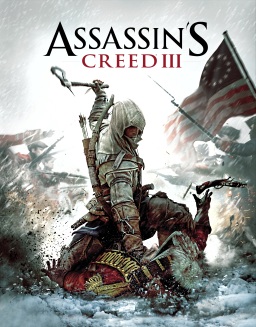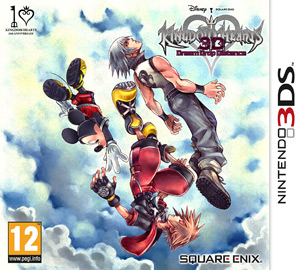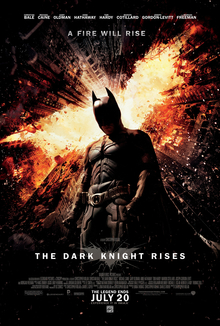This is the first of three essays examining magic as an imagined
medium, specifically in relation to videogames and to a lesser extent,
speculative literature. If you already know Materia from Magecite, and plasmids
from biotics, feel free to skip ahead to the next essay, Mundane Magic & World
Building. If not, this quick history lesson should bring you up to speed on how
magic has changed in videogames throughout the last 3 decades.
Computer programming and digital media have often employed fantastic
and magical metaphors. Early MUDs and virtual worlds were shaped by analog
role-playing practices and tropes, most famously those in the Dungeon’s & Dragons series (D&D). Webmasters and forum moderators
held titles like ‘Wizard,’ and ‘Warlock,’ and it was a fitting nomenclature.
Their abilities to censor and abjure disruptive users, functions that are
automated and taken for granted today, often required non-trivial knowledge of
computer programming.
Fig.
1: A small sample of D&D manuals with various rules and spells.
This arcane heritage allowed magic to make a handsome transition to
videogames. But the adaptation to consoles and computers has had an ironic
effect on the practice of magic: it convenienced what was intentionally arcane.
The encyclopedic and procedural affordances of digital media berated players from the tasks of consulting rule and
spell books and calculating their effects through convoluted formulas. These
tasks share considerable parallels with the occult practices they are intended
to portray, and in many ways, their remission undercuts the mysterious nature
of the supernatural. In fact, mere spell menus and magic points became so
pedestrian that game designers have recently started to bring the mystery and
strangeness back into magic by incorporating new mechanics to make the process
complex again.
Even relatively simple magic systems require fairly complex conceptual
frameworks that boil down to at least three essential parts: Acquisition,
Execution and Calculation. Acquiring spells entails how the player first
manages to obtain spells. Early installments of the Ultima and Final Fantasy role-playing
franchise treated magic as commodities, while more recent games treat them as
reusable abilities that are gained automatically as the player advances, or as
character customization choices. Execution entails how the player performs
magic in games. This can range in complexity from selecting a menu option (Final Fantasy, Ultima) or pulling a trigger (BioShock),
to drawing sigils on a touch screen with a stylus (Castlevania: Dawn of Sorrow) and mixing different elemental values
into complex chains (Magicka). The
third category, Calculation, not only describes the nature and extent of a
spell’s effect on the gameworld, but also how the player’s use of magic is
limited. Unique magic systems have come to define certain gaming franchises,
not only by shaping gameplay, but by defining the laws of the game’s diegesis,
and in many cases, the game’s narrative arc. Arguably, the most effective magic
systems synergize with effective storytelling.

Fig.
2: Buying magic spells as consumable commodities in Ultima 1
Acquisition is the foundation of every magic system because it
describes how magic comes into existence the game world. Commodity magic is the
simplest magic system to grasp, and it can be described as the consumable
reification of the supernatural. Spells must be bought or found. This system is
often paired with the execution of text-based menu selection, and a calculation
system with fixed values that causes the spell-item to disappear after use.
The Ultima series began using
this system (1981), and complicated it in the series’ fourth installment (1985)
with an acquisition system I refer to as the Recipe System. The Recipe System
is similar to the Commodity System, except that multiple commodities must be
combined to create spell effects. Conceptually this decouples the concept of a
spell with the concept of resource. Spells become abilities that can be
performed with the correct combination of resources. Practically, spells become verbs rather than
nouns.
A similar effect results from the Magic Point (MP) System. The player
must acquire the ability to use a spell, and the magical energy (referred to as
mana, manna, chi, ki, energy, psi, and hundreds of other things) necessary to
perform the spell. Acquisition of spells is typically non-trivial, requiring
expensive purchases, ‘leveling up’ by earning experience, or learning magic
from magical items, often equipment. In contrast, magical energy can typically
be gained and regained fairly easily; often automatically recharging over time,
or when the player saves or rests, or through relatively inexpensive consumable
items.
The MP System has existed in pen and paper gaming since at least 1980,
with the DragonQuest gaming system,
though it likely dates back even earlier through D&D variants. The DragonQuest
pen and paper game is not to be confused with the similarly named Japanese RPG
series, Dragon Quest which was
released in the United States as Dragon
Warrior in 1986. Incidentally, Dragon
Warrior was one of the first console RPGs to leverage the MP system. The
rogue-like Moria was one of the first
computer games to use the MP System computationally, in its v 1.0 release in
1983. To this day, the MP system remains the most prevalent form of magic
system.
Fig. 3: Moria was one of the first computer
games to use an MP system.
We are already presented with a wide variety of potential systems based
on ‘remixing’ the various systems described here, and we have yet to touch on
Execution systems in any detail. Early roleplaying titles mediated combat
through text-based menus that allowed players to select which actions to take.
These actions would then be carried out in a turn-taking fashion; another
legacy practice adopted from D&D.
This was partially due to computational constraints, but also for reasons of tone.
RPGs were associated with thoughtful, tactical play, similar to chess.
New genres yielded new Execution systems. In the late 80s, magic
systems began to spread beyond their native roleplaying genre. The first entry
of Konami’s monster-hunting Castlevnia (NES,
1986) franchise allows players to use magical “Sub Weapons” with a single
button command, as opposed to a menu. The Acquisition system is also two-fold:
players must pick up the sub-weapon item, and then obtain a sufficient number
of hearts (MP by yet another name) in order to use the weapon. Zelda II: The Adventures of Link (NES,
1987) features a hybrid system, where magic power had to be obtained by
obtaining game objects in action-oriented, platform style gameplay, but cast
through a menu-based execution system.
Fig.
4: Konami’s Castlevania; an early
example of a magic system in
an
action title. Note the heart points on the upper right of the HUD.
Perhaps due to the frenetic influence of these action-oriented titles,
tastes began to change within the roleplaying genre as well. Squaresoft incorporated temporal constraints
into their formerly turn-based RPGS, beginning with Final Fantasy IV (SNES, 1991). The feature they used, called the
“Active Time Battle” system, restricts player and enemy actions with a timer, as
opposed to completely pausing the fight while the players select which action
to take. If a player dithers while selecting what spell to cast, enemies can
attack them repeatedly. Admittedly, this is not an explicitly magical mechanic
(and it can also be switched off), but it resulted in a considerable change in
pace in the roleplaying genre that clashed with traditional pen and paper
practices. The ATB timer was later represented by a gauge that gradually fills.
The recently released Final Fantasy
XIII-2 (PS3, 2012) uses a refined version of the ATB system.
Fig.
5: Final Fantasy V featuring a visible ATB Gauge
In addition to the new temporal constraints placed on players, game
designers began to incorporate more complex Execution systems. Final Fantasy V (SNES 1992) features a staggering array of character classes,
which can be ‘equipped’ to gradually teach characters new spells. Character
classes are perhaps the most prevalent form of modern Acquisition systems,
where players select a role, such as healer, wizard, warrior or thief, and
gradually learn the skills and spells associated with that class.
Final Fantasy VI (1994) hard-codes
character classes but gives each character a unique Execution system, in addition
to a more traditional magic-learning system. For example, the monk (or martial
artist) character, Sabin, can use the special Blitz system to perform attacks
based on complex button inputs similar to those used in 2-dimensional fighting
games.
Fig.
6: Sabin’s Blitz skill menu in Final
Fantasy VI.
Note
the button presses listed beneath each ability.
I have said very little about each game’s Calculation Systems so far,
and the reason for this is that there is not much to say. In pen and paper games,
calculating spell effects involved the player through dice-rolling and
coin-flipping; activities that mirrored ‘actual’ magical practices called
auguries which were used to determine future events. Calculation systems are
particularly interesting for non-combative “utility” spells, whose effects can
vary more drastically than differing amounts of damage (a poorly rolled
transformation spell might make enemies more malicious instead of making them
harmless). In videogames, utility spells
(if they exist at all) often have binary or hard-coded effects and the majority
of the calculation system is devoted to determining damage. Generally, damage calculation is still
semi-randomized, but completely automatic: The computer rolls the dice and
doesn’t even bother to read players the results.
One type of Calculation System that does involve players is the
Elemental Dominance chart, where specific categories of damage (fire, wind,
electricity) are especially effective against specific categories of enemies (plant,
rock, water). This system was used through-out the Final Fantasy series, but
brought to greater prominence with the Pokemon
franchise (Game Boy, 1998). In these systems, the players can proactively
affect the calculation system by selecting spells that exploit opponent’s
elemental weaknesses. The system is exceedingly prevalent, but ultimately as thought-provoking
as a convoluted game of Rock-Paper-Scissors.
In the new millennium, magic has been rendered with increasingly flashy
and complex graphics. Magic system mechanics have also become increasingly
complex and involving, marking a technological turn back toward arcane
knowledge and abilities.
Capcom’s Devil May Cry (PS2, 2001)
brought magic even deeper into the action genre by incorporating a magic meter
that behaved similarly to the super-move gauges of fighting games. The devil
trigger gauge gradually builds up as players vanquish enemies. Once filled, the
gauge allows players to initiate a brief demonic transformation with magical
powers. New spells can be acquired by collecting items dropped by defeated
enemies.
Square Enix’s Kingdom Hearts (PS2,
2002) series featured an interesting
hybrid between action games and RPGs, in that it maintains text-based menus to
mediate combat, but completely eschews artificial turn-taking mechanics in
favor of immediate action. In this case, the text-based menus are employed for
primarily aesthetic reasons, invoking the tone of the Final Fantasy series. In fact, the game allows players to
circumvent the menu commands by creating button-combination short-cuts to
activate abilities.
2K Games’ BioShock (multiplatform,
2007) married a robust, RPG-style magic and character customization system to
first-person-shooting gameplay under the thematic guise of fanciful genetic-engineering.
While the DOOM-like Heretic franchise feature magically
themed first-person shooting gameplay as early as 1994, the magic spells behave
identically to firearms with consumable ammunition, as opposed to extra
abilities that can be leveraged in combat. In contrast, BioShock features a multifaceted Acquisition System, where players
must find or purchase ADAM, Gene Tonics, and Gene Tonic slots to use magic.
Once equipped, spells are used with the pull of a trigger, and generally behave
as fanciful ordinance, with a meter that gradually depletes.
Fig.
7: A player uses a “plasmid” to freezes an enemy in place in BioShock.
It was also during this time that Blizzard unleashed its MMO
juggernaut, World of Warcraft (PC, 2004).
Magic had been a substantial part of MMOs and MUDs for nearly a decade and a
half, but their magic systems were fairly simplistic MP-based affairs that
paled in comparison to the innovations and experiments featured in the
single-player titles listed above. Again, this was partially a matter of
technological constraints. Lag, collision issues and balance constraints still
prohibits anything as immediate or flashy as Devil May Cry’s gameplay in an MMO. World of Warcraft managed to elevate combat above Ultima Online, EverQuest,
Dark Age of Camelot and countless others, by drastically increasing the pace of
combat, to prioritize timely keyboard presses as opposed to relatively sedate
mouse-clicking. Blizzard also did its best to differentiate the spell-casting character classes by providing them with unique game
mechanics and distinctive magic spells. For example, Warlocks
must drain the souls of their enemies to fuel other spells, while Druids can
shapeshift into animal forms to gain new abilities.

Fig. 8: The Druid Class' "Balance Meter" from World of Warcraft.
At high level play, Blizzard’s system ultimately boils down to
triggering each ability in a meticulous ‘rotation’ to maximize damage-dealing
or healing efficiency. In an effort to combat player’s waning interest in the
system, Blizzard has begun layering new quirks onto the now-familiar systems of
old classes, such as bestowing expendable charges of Holy Power to paladins,
and implementing an elaborate “balance meter” for Druids. The latter system causes spells to accumulate
power as they are used repeatedly, up to an extent, at which point the cycle
resents and starts to swing in the other direction. Optimistically, this system
adds an extra element of strategy to spell-casting. Less charitably, it is
another hoop to jump through that further constrains a player’s ability
rotation.
The latest installment in Bethesda’s long-running Elder Scrolls series also bears comment, for its partial successes.
In addition to a traditional MP based magic system, the designers implemented a
new cool-down based Dragon Shout magic system. The most exciting aspect of this
new, supplementary magic system is the spell Acquisition method. Players must
slay dragons to absorb their souls, which can then be used as currency to unlock
words of power that must be discovered in dungeons. These words of power can
then be recombined to form Dragon shouts. This is lexical acquisition is
suitably adventurous and praise-worthy, and having the option to use another
temporally restricted attack does add another much-needed layer to the series’
rather lackluster combat. The effects of the spells however, are a considerable
disappointment. Many of the shouts have identical effects to existing spells,
undercutting their novelty and significance.
Arrowhead Game Studio’s charmingly humorous and aptly titled Magicka, offers one potential solution with
a complex chain of elemental codes. The hackneyed mechanic of
rock-paper-scissors elemental dominance rears its ugly head, but the system is
redeemed by the inclusion of total incompatibility. If the player mixes two
opposite elements, his spell fizzles, requiring complex memorization and
genuine dexterity as opposed to merely fast reaction times, as per Warcraft’s rotations.
The changes of the late 90s and 2000s have succeeded at making magic
arcane again, but they also represent a repetitious cycle of staid conceptual development.
The videogame industry first streamlines complicated practices to draw in a
larger audience and then gradually complicates said-practices in order to make
magic systems immediately compelling again.
Videogames as a medium, and magic systems in particular, have the
potential to engage people in more subtle and thought-provoking ways than
increasing reaction times and requiring increasingly complex button inputs. Magic
systems persist as a staple of fantasy literature because they allow readers to
consider realities that play by different rules. Videogames allow people to
experience working simulations of these alternate realities. In order for magic
systems to mature, they must reach beyond mere combat and even puzzle-solving.
They ought to consider magical politics and magical economies. Magical
scullery, drudgery, newspapers, shipping and pets.
In my next essay, I will demonstrate that many videogame titles—some of
them decidedly non-magical—are already flirting with these possibilities,
though their conceptual potential is marginalized, particularly when weighed
against technologically primitive pen and paper games.






















